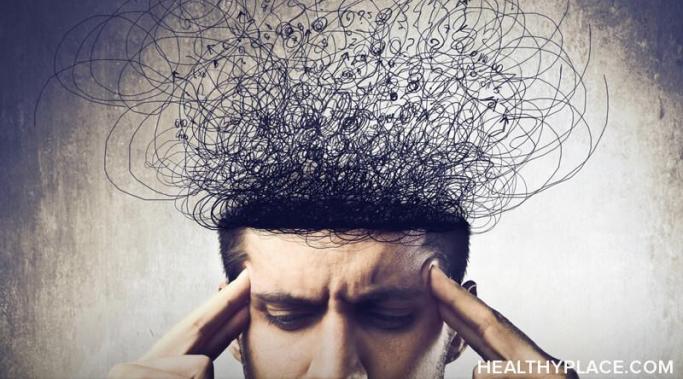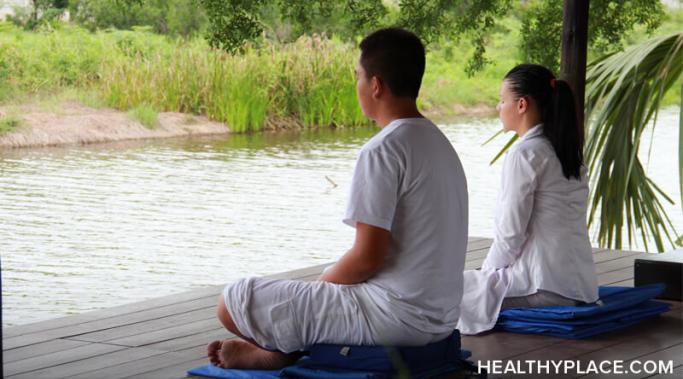Do you hate the phone (or, more specifically, talking on the phone) or experience phone anxiety? If so, you’re not alone. I loathe talking on the phone, and I’m always surprised by the people I encounter who confess the same thing. Aversion to the phone exists on a spectrum, ranging from a simple dislike to a much more complex reaction involving full-blown anxiety, with all of its physical and emotional symptoms. Continue reading to learn some facts about phone anxiety as well as ways to deal with hating talking on the phone.
Anxiety Management – Anxiety Schmanxiety
I used to be certain that nothing--not even mindfulness--would quiet my anxiety. I found it difficult to be still because of anxiety's constant stream of racing thoughts, tumultuous emotions, and halting actions. Not only could I not be present in each moment, I didn't want to be present in each moment. I worried that if I stopped being anxious, I wouldn't earn success in any of the areas of my life. Anxiety had tricked me into believing that without it, I couldn't move forward into a quality life. I used to listen to anxiety, but no longer. I found success once I used mindfulness to quiet my anxiety.
When dealing with a crisis, it can be difficult to stay calm and anxiety-free. After all, “crisis” implies catastrophe, disaster, and sometimes even near-Armageddon. In reality, a crisis can be of any size or nature and is something that causes distress to those involved. Facing any type of crisis can create new anxiety where none existed before, and it can aggravate existing anxiety and anxiety disorders. While it’s natural to experience heightened anxiety during a crisis, it’s not a rule. You can stay calm and anxiety free in a crisis. Here’s how to do it.
Anxious thoughts act like a broken record. An anxious thought will start to play in the mind, and once it does, that obsessive thought plays over and over and over again. Listening to our anxious thoughts nonstop can make them grow ever bigger and stronger, and we come to believe them. Our worries feel real when anxiety is a broken record. When this happens, it's time to change our tune.
The human brain has a negativity bias, and it is partially because of this negatively skewed view of our world that we experience anxiety. Studies have shown that the brain notices the negative more quickly and more frequently than it notices the positive.1 Not only that, it reacts much more strongly to negative stimuli than to positive. When our brain automatically, on its own, gravitates toward the negative and focuses its attention there, we feel stressed and anxious. Are we doomed to anxiety because of the negativity bias?
Anxiety and panic can overstimulate the brain, rocket our senses into hyperactivity, and make us feel wired. When we feel keyed-up and on edge, it can feel as though nothing will help. Here we are at risk of jumping right out of our own skin, which would do nothing more than increase both anxiety and panic, and there’s not a thing we can do to settle down. Or is there? It can seem counter-intuitive, but practicing mindfulness when we’re at our most agitated can help when anxiety and panic overstimulate your brain.
Researchers are beginning to shed light on the relationship between anxiety and sunlight, and it’s becoming evident that the sun is linked to anxiety and possibly even panic disorder. The connection between sunlight and depression has long been established (Relationship Between Depression and Anxiety). The inclusion of anxiety and sunlight in this mix is a development that just might illuminate more strategies to reduce anxiety.
It's possible to calm the anxiety you experience during the day simply by creating a morning ritual. Whether anxiety obnoxiously wakes you before your alarm sounds or greets you loudly the moment you're awake, beginning the day with anxious thoughts, troubled emotions, and agitated bodily sensations is exhausting and discouraging. Yet if you create a morning ritual to calm anxiety, it doesn't have to ruin your day before it even begins.
Mandalas make excellent tools to reduce anxiety. It’s becoming widely known and accepted that mandala coloring is a calming experience, quieting the racing thoughts of anxiety as well as soothing neurochemical activity in the brain and slowing the body’s physiological response to stress. Here are some suggestions for how you can go beyond basic coloring and use mandalas as tools to reduce anxiety.
Generalized anxiety disorder (GAD) is a relentless experience of anxiety and worry. Worry and anxiety are part of the human experience; there’s even a type of anxiety known as existential anxiety that we feel simply because we exist. However, the anxiety and worry of GAD go far beyond ordinary anxiety. Regardless of the type of anxiety you experience, even if it’s a diagnosable disorder such as GAD, you can find peace as you learn to leave worry at the door.









